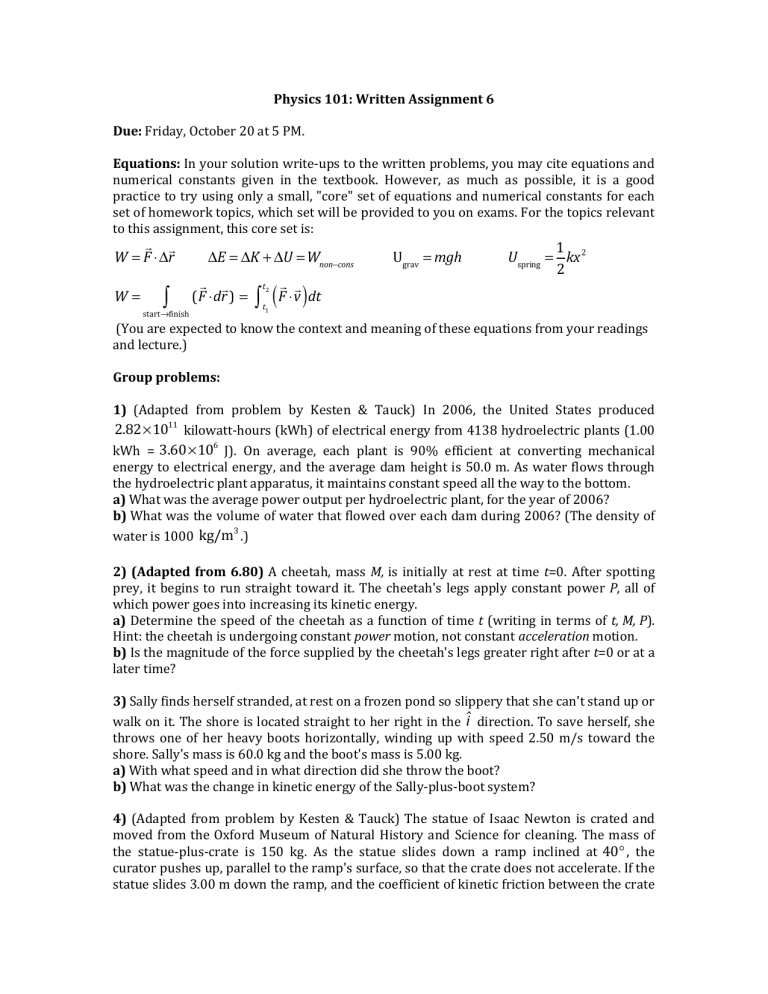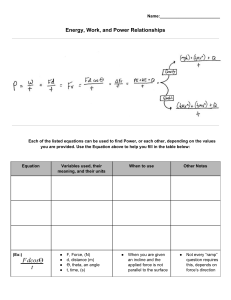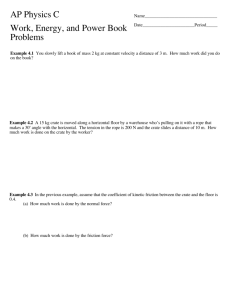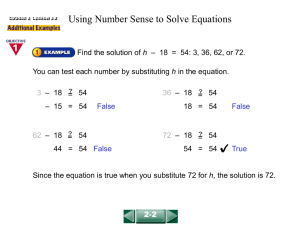
Physics 101: Written Assignment 6 Due: Friday, October 20 at 5 PM. Equations: In your solution write-ups to the written problems, you may cite equations and numerical constants given in the textbook. However, as much as possible, it is a good practice to try using only a small, "core" set of equations and numerical constants for each set of homework topics, which set will be provided to you on exams. For the topics relevant to this assignment, this core set is: ! ! W = F ⋅Δr W= ∫ ΔE = ΔK + ΔU = Wnon−cons ! ! (F ⋅dr ) = start→finish ! ! ∫ ( F ⋅ v )dt t2 U = mgh ! grav 1 Uspring = kx 2 2 ! t1 (You are expected to know the context and meaning of these equations from your readings and lecture.) Group problems: 1) (Adapted from problem by Kesten & Tauck) In 2006, the United States produced 2.82×1011 kilowatt-hours (kWh) of electrical energy from 4138 hydroelectric plants (1.00 6 kWh = 3.60×10 J). On average, each plant is 90% efficient at converting mechanical energy to electrical energy, and the average dam height is 50.0 m. As water flows through the hydroelectric plant apparatus, it maintains constant speed all the way to the bottom. a) What was the average power output per hydroelectric plant, for the year of 2006? b) What was the volume of water that flowed over each dam during 2006? (The density of water is 1000 kg/m3 .) 2) (Adapted from 6.80) A cheetah, mass M, is initially at rest at time t=0. After spotting prey, it begins to run straight toward it. The cheetah's legs apply constant power P, all of which power goes into increasing its kinetic energy. a) Determine the speed of the cheetah as a function of time t (writing in terms of t, M, P). Hint: the cheetah is undergoing constant power motion, not constant acceleration motion. b) Is the magnitude of the force supplied by the cheetah's legs greater right after t=0 or at a later time? 3) Sally finds herself stranded, at rest on a frozen pond so slippery that she can't stand up or walk on it. The shore is located straight to her right in the î direction. To save herself, she throws one of her heavy boots horizontally, winding up with speed 2.50 m/s toward the shore. Sally's mass is 60.0 kg and the boot's mass is 5.00 kg. a) With what speed and in what direction did she throw the boot? b) What was the change in kinetic energy of the Sally-plus-boot system? 4) (Adapted from problem by Kesten & Tauck) The statue of Isaac Newton is crated and moved from the Oxford Museum of Natural History and Science for cleaning. The mass of the statue-plus-crate is 150 kg. As the statue slides down a ramp inclined at 40° , the curator pushes up, parallel to the ramp's surface, so that the crate does not accelerate. If the statue slides 3.00 m down the ramp, and the coefficient of kinetic friction between the crate and the ramp is 0.540, calculate the work done on the crate over this interval by each of the following: a) gravity, b) the curator c) friction, d) the normal force between ramp and crate. e) What is the net work done on the crate?


